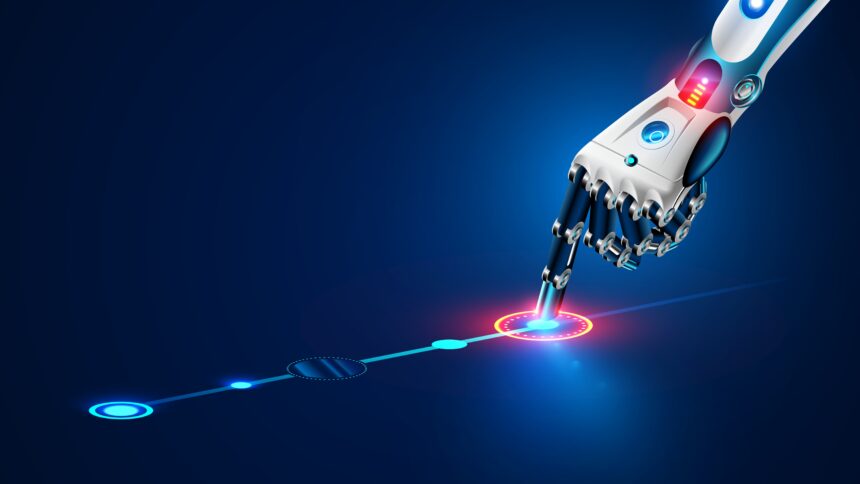Did you know that companies around the world spent over $641 billion on AI last year? One of the industries that is driving demand for AI is the design profession.
Artificial intelligence technology is profoundly changing the trajectory of the design profession. More designers are using AI to improve the quality of their designs and streamline the design process.
Some of the ways that designers take advantage of AI technology include:
- Selecting the subject of a photo when the designer wants to remove a background or alter the subject
- Choosing an appropriate color when modifying a photo in some way (such as colorizing a black and white photo)
- Adding interesting effects, such as pixelating a photo
AI technology is a breaking technology that is forever changing the design field. There are a lot of great reasons designers will leverage AI to improve their work.
AI is changing the game across all facets of the design profession. Both product and UX designers can find ways to take advantage of it.
Often used interchangeably, Product Designers and User Experience (UX) Designers roles might seem broadly similar. However, in reality, a Product Designer and a UX Designer are quite different. A comparative analysis between the two suggests that these digital product design roles can be confusing to people as they both focus on product development and follow the design thinking process for problem-solving.
However, despite the differences between the two professions, they both have discovered the wonders of using AI to improve the quality of their designs. We will give you a broad overview of the two disciplines, before delving into the applications of AI.
So, the question is – how is a Product Designer different from a UX Designer?
To begin with, Product Designers and UX Designers both play crucial roles in how technology or products are used on a daily basis. But they both serve different purposes. Product Designers are the ones responsible for ideating and thinking through each step of the product creation process. On the other hand, UX Designers are the ones in charge of how users interact with the product once it is introduced to them.
In other words, Product Designers and UX Designers focus on two entirely different areas in product development. Though there are some overlapping roles when it comes to both jobs, on paper, their roles are often interchangeable.
But had they been the same, they would not have been named different!
Let’s jump into a comparative analysis to figure out how a Product Designer differs from a UX Designer, and to what way do their roles overlap.
Who is a Product Designer?
A Product Designer is a full-stack designer who does UX, UI, coding, project management, and of course, problem-solving (most importantly). A Product Designer ideates and designs solutions to critical issues and problems that are found in the initial process of product development.
To solve these issues, product designers facilitate solutions, create multiple test plans, produce wireframes, and make rounds of A/B testing.
Product Designers also support developers during the launch process as well as work with marketing teams to offer a synergy between the brand and the product.
Product Designers have been around longer than UX Designers and are often considered the guardians of the product, since they are responsible for relevant, cost-effective, and functional products.
Who is a UX Designer?
A UX Designer is the one who focus on user satisfaction for a particular product. They keep in mind user interaction as the prime concern and work on the design accordingly. They also ensure that there is a consistent improvement in the usability and accessibility of the product.
A UX Designer takes control of the full scope of the design thinking procedure – right from research to ideation and keeps focus on user satisfaction. In other words, they are responsible for ensuring that the product created is optimized exclusively for the user.
Product Designer Vs UX Designer: Similarities!
Well, of course – there are indeed some similarities between Product Designers and UX Designers. Both of them are responsible for the design thinking process and consider human-centered approach in designing.
In fact, both of them use the same wireframing tools like Balsamiq and Sketch during the design process, as well as user mapping software like Lucidchart and Overflow.
But, what are their differences?
Product Designers and UX Designers majorly differ in the way they ask questions! A UX Designer would ask if the product is easy to use, while the Product Designer would ask if the product adds to any sense in the current economy.
A UX Designer is concerned if the product is user-friendly. And a Product Designer is focused on making it cost-effective.
In other words, their priorities are different, and hence their roles are different.
Additionally, for obvious reasons, their skillsets and pay scales also differ. And so are their strategies and team focus.
How Does AI Technology Affect Product and UX Designers?
There are a lot of great reasons for designers to use AI. Here is an overview of how product and UX designers both benefit from it.
How Product Designers Use AI
There are a lot of ways that product designers are using AI technology. One of the biggest benefits is that they can use machine learning to create digital twins. In essence, this means that they can replicate a product in an AI-driven ecosystem. They can see how a product would operate in a theoretical scenario. They can also use AI for predictive maintenance and to optimize the assembly process.
How UX Designers Use AI
There are just as many benefits of using AI in UX design. UX designers can anticipate how customers will respond to many visual elements based on past customer engagement data. They can also use AI to ensure the website runs smoothly by optimizing loading times and other factors. There are some misconceptions about AI-driven design, but it is very effective nonetheless.
Read here to know further about how a Product Designer and a UX Designer are different (or similar).







